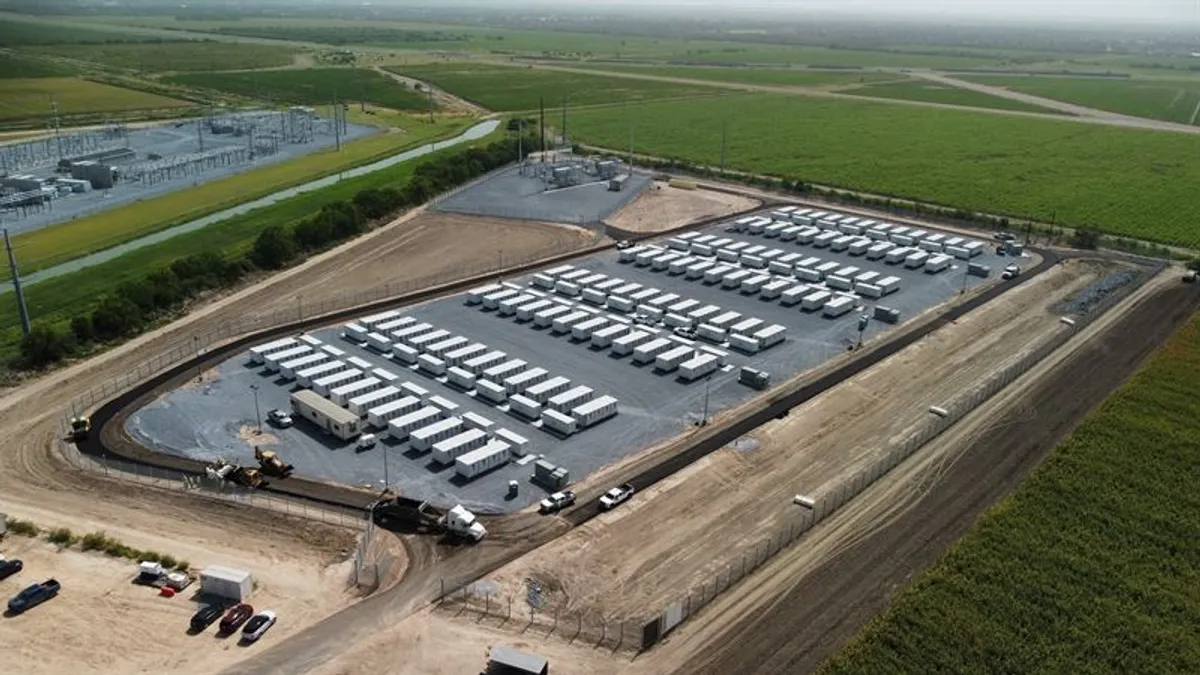Dive Brief:
- The New Jersey Board of Public Utilities’ staff is asking stakeholders to weigh in on a proposal for a state energy storage incentive program that would apply to front-of-the-meter and behind-the-meter systems.
- The straw proposal, released last September, drew criticism from some stakeholders, including because of its treatment of utility-owned energy storage. BPU staff on Aug. 8 issued a request for information on different aspects of the proposal, and intend to revise the plan based on responses, which are due Sept. 12.
- New Jersey is aiming to achieve 2 GW of installed energy storage by 2030 — one of the most ambitious storage targets in the nation, according to the RFI — and the energy storage incentive program is seen as building a critical foundation for that build-out.
Dive Insight:
BPU staff are proposing that the storage incentive program have separate market segments for front-of-the-meter and behind-the-meter storage, with a portion of distributed storage incentives set aside for projects that cater to overburdened communities. The incentive program would be technology neutral, and provide fixed annual incentives as well as performance-based incentives for both types of storage devices.
According to the proposal, the fixed incentives would comprise a minimum of 30% of the program’s total incentive payments, and be paid annually in dollars per kilowatt-hour of energy storage capacity. The remaining incentives would be performance-based; for front-of-the-meter storage, this would depend on the carbon reductions achieved by the energy storage system, while for distributed storage it would be based on power exported to the distribution system when called upon.
As per the proposal, the program would only include privately-owned and operated storage devices, and “does not propose to allow for utility ownership or operation of devices.” The proposal also notes that “While ratepayers will support investment in storage resources, the commercial and operational risks will largely be borne by private investors.” But BPU staff noted that utilities would need to be involved in the process to make sure that the distribution and transmission grid is capable of connecting storage devices.
However, the question of whether utility-owned energy storage should qualify for incentives has become a point of contention among stakeholders.
In comments filed with the agency in December, Public Service Electric and Gas Co. urged regulators to consider including the state’s electric distribution utilities in New Jersey’s storage incentive program. The utility pointed to its expertise in siting and deploying storage, integrating it with other clean energy technologies, as well as its past success in kickstarting the nascent solar industry.
Achieving New Jersey’s 2 GW storage goal by 2030 will require an “all-hands-on-deck, all-of-the-above approach,” PSEG said.
“[The proposal’s] exclusion of utilities — especially in light of the hard road ahead in meeting the State’s goals — may only further increase the likelihood that New Jersey falls even further behind,” it added.
Last week’s request for information asks stakeholders to weigh in on some of these questions, including the advantages and disadvantages of utility control of energy storage systems; what the current and estimated future fully-installed unit cost of energy storage systems are expected to be through 2030; and whether distributed storage resources that can provide grid services should be allowed to opt in to either the front-of-the-meter or behind-the-meter program.
“This is the first significant state-level storage program that I’m aware of in New Jersey,” Morten Lund, of counsel at Foley & Lardner, said.
However, the state is in the PJM Interconnection, which he says has been a leader in distributed storage thanks to its open capacity market.
Regarding the question of utility ownership of storage resources, “there’s always contention, whether it’s storage or solar … to what extent utilities should be operating them and to what extent they should be owning them, and whether those two should belong together,” Lund said.
The New Jersey energy storage incentive program will be essential for catalyzing a sustainable energy storage market in the state, Phil Sgro, a spokesperson for American Clean Power said in an email. The organization supports the creation of an incentive program that includes both an upfront, fixed incentive in combination with a performance-based payment, Sgro said.
"Energy storage is increasingly the most cost-effective reliability solution for electricity customers and is a rapidly growing resource in a number of markets across the country," yet regulatory frameworks, market rules and other barriers can hinder the deployment and integration of energy storage, and prevent customers from being able to provide or monetize the value their systems can offer, he added.














